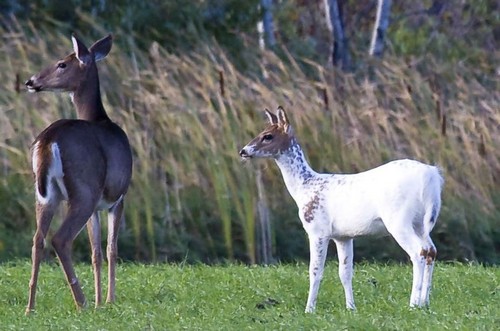White-tailed deer are amazing animals. They are survivors that thrive in the face of a variety of threats, both anthropogenic and naturally occurring. But not all whitetail are created equal. Mother Nature conducts her own experiments, but her trials play out over hundreds, thousands of years rather than days or weeks. Case in point: genetic variation. Most whitetail deer look very much alike, but not all whitetail are the same.
There are some variations even within normally colored deer, but then there are some look much different than the majority of the herd. Whitetail can also be white (albino), brown and white with paint-horse-patterning (piebald) or even black (melanistic). But these deer are different from other whitetail in more than just color. Far more often than not, these deer have physical abnormalities that hinder them. So these color variations in whitetail are rare, so the theory of “survival of the fittest” is definitely in play.

Following is an account of an individual landowner’s take (and others he knew) on piebald deer. Although it seems most of this stuff happened 30 or more years ago, it’s interesting to read:
“I moved our family to a 75 acre mini farm located in Athens County, Ohio, right on the border of Washington County Ohio in September 1985. We immediately noticed some very strange looking deer and I started looking in to this through our local library (the internet was not a good source at this time) but I did not find a great deal of information except that some references referred to albino deer and their genetic defects but these deer did not meet the true albino description.
I then turned to some local old timers and they told me that these animals, piebald deer, were bad to have around. They used some very bad language to describe them. After more investigation and inquiring to the Ohio Department of Natural Resources I found out that these piebald deer should be harvested to prevent the passing on of genes within our local herd. With some help from a few friends we eliminated these animals and we have not seen any more of these animals for the past 29 years.
FYI additional info: We are originally from the Eastern mountains of West Virginia and in the late eighties my father-in-law took a completely white buck in Tucker County, West Virgina and had the entire deer professionally mounted. To date, we have not seen another deer like this in the Tucker County area.
Some hunters believe that you should never harvest an albino or a piebald deer but they are working with superstition and not good science. These animals are defective and need eliminated from the healthy herd. Happy hunting, Doc”